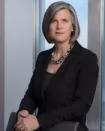In United States ex rel. Bishop v. Wells Fargo & Co., 823 F.3d 35 (2d Cir. 2016), the Second Circuit rejected an attempt to use the False Claims Act ("FCA") as an enforcement mechanism for banking regulations in the lead-up to the 2008 financial crisis. Expressing deference to the federal government's role in maintaining the stability of financial markets, the Second Circuit declined to hold that the defendant banks' broad representations of regulatory compliance gave rise to FCA liability. The case represents a victory for the financial services sector.
Background
In Bishop, relators brought FCA claims against Wells Fargo, alleging fraud by executives at two banks Wells Fargo had acquired – Wachovia and World Savings Bank. The relators alleged that Wachovia executives had used improper accounting practices to hide toxic assets and conceal the fact that the bank was undercapitalized. They also asserted that World Savings Bank had failed to implement required internal controls and had made loans that were prohibited by applicable laws and regulations.
These alleged activities alone, however, did not involve claims for payment from the government, an essential element under the FCA.. To bridge that gap, relators argued that Wachovia, and later Wells Fargo, made false statements to the Federal Reserve System (the "Fed") by concealing this conduct when they borrowed money from the Fed's "discount window."
In particular, relators pointed to three representations in the Fed's Operating Circular No. 10 (the "Lending Agreement"), which they claim the banks could not have made truthfully when applying for those loans: Section 9.1(b), attesting that the borrower is not in violation of any laws or regulations relevant to the Lending Agreement; Section 9.1(g), attesting that the borrower has made no false statements in any documents furnished to the Fed; and Section 9.1(i), attesting that no event of default has occurred.
Relators argued that the banks had violated the FCA by making express false certifications under Sections 9.1(b), (g), and (i); making implied false certifications under Section 9.1(b); fraudulently inducing the Fed to lend them money; and conspiring to submit false claims.
The Southern District of New York granted the defendants' motion to dismiss with prejudice, and relators appealed.
Second Circuit Majority Opinion Affirms Dismissal
In an opinion by Chief Judge Katzmann, the Second Circuit affirmed the dismissal.
The court began by providing a detailed background on the operation and policy goals of the Fed's discount window. As the court explained, the discount window allows banks to borrow funds to meet their federally-mandated reserve requirements. Banks had originally been reluctant to avail themselves of this mechanism, for fear that doing so would give the impression that they were financially unsound. This reluctance, in turn, hampered the Fed's ability to maintain the stability of the U.S. financial system by cushioning shocks to the market. To remedy this, the Fed revised its regulations in 2003 to allow banks in "generally sound financial condition" to borrow at the primary credit rate (a rate set above the target Federal Funds Rate) with very minimal requirements. 12 C.F.R. § 201.4(a).
During the 2008 financial crisis, the Fed created another tool to manage liquidity: the Term Auction Facility ("TAF"). Under TAF, banks could bid on the amount of money they wanted to borrow and the interest rate they wanted to borrow at, and the Fed awarded loans based on the bids it received. Just as with the primary credit program, the TAF was available to banks in "generally sound financial condition."
The court in Bishop emphasized that the Fed's regulations required very little of institutions seeking to borrow under the primary credit program or TAF. Those regulations impose "minimal administrative burden," and they provide the Fed with discretion to lend even where an institution does not actually qualify for the primary credit rate. 823 F.3d at 40. In the vast majority of cases, the borrower must submit no more than the amount and term of the loan being sought.
Express False Certification
Turning to relators' express certification claims, the court first addressed the Section 9.1(b) certification in the Lending Agreement, under which defendants affirmed that they were not in violation of any laws or regulations relating to the contract. The Second Circuit agreed with the district court that this certification was too vague to support a false certification theory. In doing so, the court rejected relators' attempt to draw a parallel to the Tenth Circuit's decision in United States ex rel. Lemmon v. Envirocare of Utah, Inc., 614 F.3d 1163, 1171 (10th Cir. 2010). There, the Tenth Circuit had held that a certification of compliance with all the terms in a contract was sufficiently specific to give rise to an FCA claim if the defendant violated one of those terms. In contrast, the certification here was hopelessly broad, implicating "thousands of laws and regulations that could plausibly affect . . . the terms of the Lending Agreement." 823 F.3d at 45. Nor was the court convinced that industry practice required that these certifications be read as narrow, enforceable representations. The Fed, it noted, is not a commercial bank, and providing such sweeping enforcement authority to relators under the FCA could undermine the Fed's goals of market stabilization.
The court similarly affirmed dismissal of the express false certification claims under Section 9.1(g), which requires borrowers to certify that they have not provided any false documents or made any false statements to the Fed in connection with borrowing funds. As the court explained, the minimal documentation submitted by discount-window borrowers did not contain any of the detailed financial information that relators claimed had been falsified.
Finally, the court affirmed dismissal of the claims under Section 9.1(i), which required certification that no event of default had occurred. Because these claims relied on the same conduct as the other two express false certification theories, they failed for the same reasons.
Implied False Certification
In addition to advancing an express false certification theory under Section 9.1(b), relators argued that the fraudulent conduct they had alleged also resulted in an implied false certification under that provision. Relying on its earlier decision in United States ex rel. Mikes v. Strauss, 274 F.3d 687 (2d Cir. 2001), the court rejected this theory as well.
The court disagreed with relators that its analysis should focus on whether the regulations at issue lay "at the heart of" the banks' agreements with the Fed. 823 F.3d at 48. Instead, it pointed to its holding in Mikes that the relevant regulations must expressly state that they are conditions of payment in order to give rise to an implied certification claim. That was simply not the case here.
Notably, in reaching this decision, the court also clarified that Mikes applied beyond the healthcare fraud context that had been at issue in that case. As the court explained, Mikes' deference to existing regulatory mechanisms, designed to facilitate the functioning of a complex, and publically significant industry, applied just as strongly here.
Fraudulent Inducement and Conspiracy
The court dealt with the remaining fraudulent inducement and conspiracy claims in summary fashion. Because these claims were derivative of their other theories, they failed for the same reasons.
Implications
The Second Circuit's decision in Bishop stakes out an important limitation on complaints that premise FCA liability on broad certifications of compliance with laws and regulations. The decision is particularly relevant for the financial services industry, where an endorsement of relators' theory could have subjected banks to treble damages under the FCA for an extraordinarily wide range of regulatory violations. Especially in the wake of the 2008 financial crisis, which has seen a proliferation of suits against banks and mortgage lenders, the case is a victory for financial institutions.
The decision may also provide a useful precedent for defendants in other industries who face FCA claims based on broad certifications of laws and regulations. Boilerplate certifications of general legal compliance are common in a number of areas, and the court's reiteration that such certifications may not be used as "a blunt instrument to enforce compliance with all . . . regulations," Mikes, 274 F.3d 699, is significant.
Bishop, however, pre-dates the recent Supreme Court decision in Universal Health Services, Inc. v. United States ex rel. Escobar, 136 S.Ct. 1989 (2016). In Escobar, the Supreme Court recognized that nondisclosure of noncompliance with a specific legal requirement could provide a basis for FCA liability where, as a result of the nondisclosure, defendant knowingly made a statement in a claim for payment that was materially false. In evaluating materiality under this standard, the Court disagreed with one aspect of Mikes, stating that it was relevant but not dispositive that a regulation may expressly state that it is a condition of payment. As a result, the contours of the Second Circuit's post-Escobar implied certification standard will require further development. We will continue to monitor decisions as they issue.
The content of this article is intended to provide a general guide to the subject matter. Specialist advice should be sought about your specific circumstances.




